Popular games for collection Densha de Go!

A train simulation game by Taito featuring the lines from Densha de Go! 1 and 2, as well as some Kantou area portions of the Toukaidou Line. Some of the strictness of the previous games was reduced through a number of features, including the addition of a panel at left which allowed the user to see a map of the upcoming track segment, including showing speed limits, which greatly reduced the required amount of track memorization, and allowed the player more time to react. The overall reduction of strictness in the game reflected Taito's shift in emphasis from arcade to home-play versions as time went on.
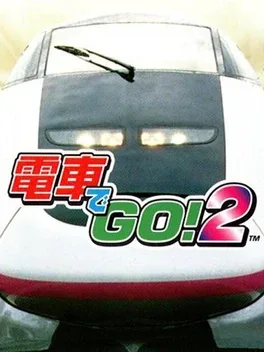
Densha de Go! 2 Kousoku-hen is a train driving simulation game. It was released in the arcades in Japan in 1998. It was ported to PlayStation, Nintendo 64, WonderSwan, Neo Geo Pocket Color, Windows, Dreamcast, and Game Boy Color. The Nintendo 64 version was titled Densha de Go! 64.
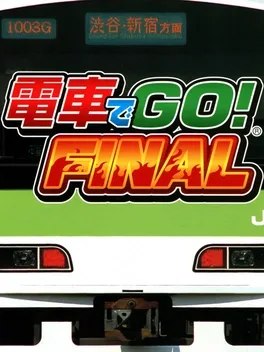
Densha de Go! Final (loosely translated to "Go by Train! Final") is an electric train driving simulation game developed and published by Taito for the PlayStation 2 in Japan on May 27, 2004. It was later ported to the PC by Unbalance on December 17, 2004. Part of the Densha de Go! series, Final features a significantly upgraded graphics and audio, a revamped penalty system (using a point-based system from Densha de Go! Ryojou-hen and Densha de Go! Shinkansen), a combo-based scoring system, an improved Navigation System display, and unlockable route extensions. In addition to standard play, the game includes an alternate play-style where players can instead (or alongside the driver player for two-player multiplayer) act as the train's conductor. Train Conductors must open and close the train doors at the correct time, choose the next correct station to stop at, and make in-car announcements. The game includes four routes: the Yamanote Line, the Chūō Main Line, the Osaka Loop Line, and the Tōkaidō Main Line. Playable in both directions, it features the entirety of the Yamanote Line and Osaka Loop Lines, the Rapid section of the Chūō Main Line between Tokyo and Takao, and the section of the Tōkaidō Main Line between Kyoto and Kobe. This version of the game was later ported to the PlayStation Portable in piecemeal, all part of the "Densha de Go! Pocket" line of releases: - Densha de Go! Pocket: Yamanotesen-hen (loosely translated to "Go by Train! Pocket: Yamanote Line Edition") was released on September 29, 2005, including only the Yamanote Line. - Densha de Go! Pocket: Chuuousen-hen (loosely translated to "Go by Train! Pocket: Chūō Line Edition") was released on January 19, 2006, including only the Chūō Main Line. - Densha de Go! Pocket: Osakakanjousen-hen (loosely translated to "Go by Train! Pocket: Osaka Loop Line Edition") was released on March 30, 2006, including only the Osaka Loop Line. - Densha de Go! Pocket: Toukaidousen-hen (loosely translated to "Go by Train! Pocket: Tōkaidō Line Edition") was released on July 27, 2006, including only the Tōkaidō Main Line. To celebrate the series' 20th anniversary, the game was later released as a standalone plug-and-play unit on February 8, 2018 as Densha de Go! Plug & Play.
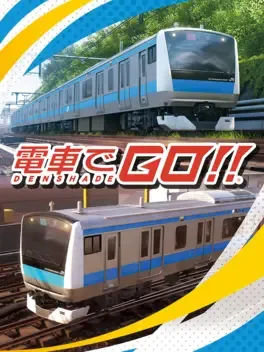
Densha de Go!! (loosely translated to "Go by Train!!") is an electric train simulation game developed by Taito and released by Square Enix for arcades (using PC-based Taito Type X4 hardware) in Japan on November 7, 2017. The first mainline arcade release of the Densha de Go! series in 14 years (after Densha de Go! Ryojou-hen), Densha de Go!! features a deluxe multi-monitor cockpit housing (with four screens, three large ones to form a panoramic view and one touchscreen to display ) resembling E231-500 series trains, and modern high-definition graphics built on Unreal Engine 4. While the game only included parts of the Yamanote Line and the Chuo-Sobu Line from the start, it received additional routes (with new vehicles) in regular bi-yearly updates (including parts of the Osaka Loop Line, the Hanshin Main Line, the Chuo West Line, and the Meitetsu Nagoya Main Line, as well as an extension of the Yamanote Line). In 2019, the game received an alternate "compact" cabinet resembling those used in the original arcade game. It also received two bonus "Fukkoku-ban" game modes, providing a faithful recreation of two of the original arcade games: one for Densha de Go! (on June 26, 2019) and one for Densha de Go! 2: Kousoku-hen 3000-bandai (on September 25, 2019). The game also received a child-friendly spin-off known as Densha de Go!! Kids, which uses a more simplistic cabinet. It later received a revamped console version for the PlayStation 4 and Nintendo Switch in 2020-2021 as Densha de Go!! Hashirou Yamanote-sen. This version is notable for having the full Yamanote Line, as well as routes parallel with it. On March 10th, 2021, the Keihein Tohoku Line was added.
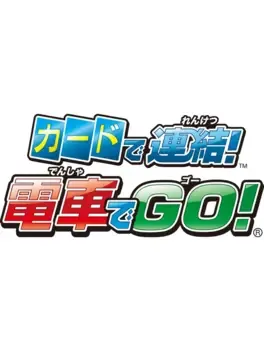
Card de Renketsu! Densha de GO! is a train simulator arcade game by Taito released on April 19, 2012 for the 15th anniversary of the Densha de GO! series. For the first time in the series, the player uses cards to compose his train.

Densha de Go! Professional-shiyou 2 (loosely translated to "Go by Train! Professional Specification 2") is an electric train driving simulation game developed and published by Taito for the PlayStation 2 in Japan on October 25, 2002. It was later ported to the PC by Unbalance on April 30, 2003. The sequel to the 1999 home console entry in the Densha De Go! series, Densha de Go! Professional-shiyou, Professional-shiyou 2 features a graphical upgrade and a new set of real-life train routes: the Shōnan-Shinjuku Line, the Tsurumi Line, the Kosei Line, the Seto-Ōhashi Line, and the Nagasaki Main Line to Sasebo Line. One new feature added to the series is the ability to save and resume route progress, and to start progress from a designated station.
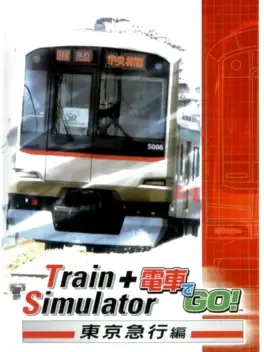
Train Simulator + Densha de GO!: Tokyo Kyuukou-hen is an train driving simulation game. It is a crossover between Ongakukan's Train SImulator series and Taito's Densha de GO! series. It uses full-motion video from the train driver's perspective and features two gameplay modes, with the display, controls, and gameplay mechanics of either series. It features three routes from the Tokyo Express Electric Railway (better known as Tokyu): the Toyoko Line, the Den-en-toshi Line, and the Oimachi Line.
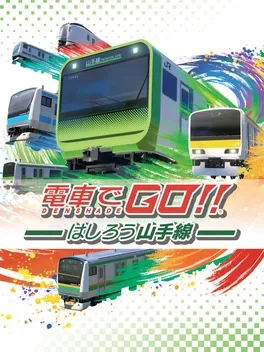
Densha de GO!! finally appears on consoles! Become a train conductor and go around the ever-popular Yamanote Line, now with the addition of the new Takanawa Gateway Station. Enjoy the best at-home train conductor experience while maintaining the the detail of the arcade version. Densha de Go!! Hashirō Yamanote-sen (loosely translated to "Go by Train!! Let's Run the Yamanote Line") is an electric train simulation game developed by Taito and released by Square Enix for the PlayStation 4 exclusively in Japan on December 3, 2020. It will be released on the Nintendo Switch on March 18, 2021. Based on the 2017 arcade game Densha de Go!!, Hashirō Yamanote-sen features the full Yamanote Line (as the original arcade version only included the southern part of it) as well as additional routes that run parallel with it (the Keihin-Tohoku Line, the Saikyo Line, the Ueno-Tokyo Line, and the Narita Express) and the part of the Chuo-Sobu Line from the arcade version. Additionally, this version includes a new objective-based campaign mode and PlayStation VR support.
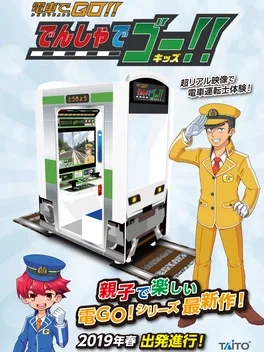
Densha de Go!! Kids (loosely translated to "Go by Train!! Kids") is an electric train simulation game developed by Taito and released by Square Enix for arcades (using PC-based Taito Type X4 hardware) in Japan on March 1, 2019. A spin-off of the 2017 game Densha de Go!!, Kids featured a simplistic single-screen arcade cabinet with a more child-friendly user interface and unique game rules (such as cleaning cartoon-ish obstacles from the window).

Densha de Go! Pocket lets players drive simulated commuter trains in Japan, picking up passengers and adhering to schedules. Densha de GO! Pocket: Yamanotesen-hen is a split port of the Densha de Go! Pocket line to the PlayStation Portable, all of which are based on parts of Densha de GO! FINAL: - Densha de Go! Pocket: Yamanotesen-hen (loosely translated to "Go by Train! Pocket: Yamanote Line Edition") was released on September 29, 2005, including only the Yamanote Line.
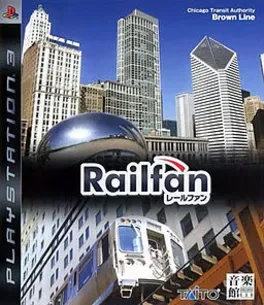
The first PS3 installment of Ongakukan's Train Simulator series. It features three different rail lines - JR East's Chuo Line between Mitaka and Tokyo, the Keihan Electric Railway's Main Line between Demachiyanagi and Yodoyabashi, and the Chicago Transit Authority's Brown Line between Fullerton and the Loop. In a first for the series, it features full HD video, as well as the ability to view the train from an external viewpoint. In addition, the game also features a "Densha de Go!" mode emulating the gameplay of that series.

Densha de Go! 3 Tsuukin-hen (loosely translated to "Go by Train! 3 Commuting Edition", also known as "Let's Go by Train! 3") is an electric train driving simulation game developed and released by Taito for arcades in Japan on March 2000. The sequel to the 1998 game Densha de Go! 2 Kousoku-hen, Densha de Go! 3 uses updated arcade hardware for improved 3D graphics (such as a higher-resolution user interface and improved models for both the trains and environment) while revamping the scoring calculation, adding online leaderboards, adding multiple time-of-day options (including morning, noon, evening, and night), and including two additional game modes ("Family Mode" for beginner players and "Tetsujin Mode" for advanced players). It features a new set of real-life train routes, including the Sasaguri Line, the Kagoshima Main Line, the San'yō Main Line, the San'in Main Line, the Chūō Main Line, and the Chūō-Sōbu Line. The game later received an update on October 2000, known as Densha de Go! 3 Tsuukin-hen: Daiya-kaisei (loosely translated to "Go by Train! 3 Commuting Edition: Diagram Revision"). This version updates some minor things, including the timetable and scoring calculation. It is the last arcade entry in the series in 14 years, prior to Densha de Go!! The original version was later ported to the PlayStation 2 on March 15, 2001, while the Daiya-kaisei version was later ported to the PC by Unbalance. The PS2 version also included a demo of Densha de Go! Shinkansen on a bonus disc, and later received a re-release (sans demo) as part of D3Publisher's Simple 2000 series of budget games, as Simple 2000 Series Vol. 22: The Tsuukin Densha Utenshi - Densha de Go! 3 Tsuukin-hen, on March 27, 2003.

Densha de GO! is a 1997 train simulator arcade game developed and published by Taito in Japan. Players are tasked with driving a train, adhering to the schedule and obeying signals and speed restrictions. It features real-world train lines from Japan, including the Yamanote Line and Keihin-Tohoku Line. The game was ported to the PC, Sega Saturn, and PlayStation. The concept for Densha de Go! was inspired by designer Akira Saito's personal fascination with Japanese train lines and railroads. He wanted to create a game that allowed players to familiarize themselves with driving a train. The controls were his primary focus as he wanted them to be accurate and responsive, and to mimic the controls of a real train—his father worked for the Kyoto City Transportation Bureau Facilities Division, which made this easier to accomplish. Saito included real-world railroads and trains to appeal towards other railroad enthusiasts, thinking that it could also attract more "ordinary" players for its realistic, familiar theme. As arcades at the time were dominated primarily by racing and fighting games, he believed its unique concept could make it stand out. Densha de Go! is among Taito's most successful games, preceded only by Space Invaders. The PlayStation version sold over one million copies. The game was well-received by critics for its controls, attention to detail, and unique concept. Some felt that its home releases lacked enough content and had poor visuals. It was followed by a long series of sequels, spin-offs, and reimaginings, beginning with Densha de Go! 2 in 1999.

Densha de Go! Shinkansen: Sanyoushinkansen-hen (loosely translated to "Go by Train! Shinkansen: Sanyou Shinkansen Edition") is an electric train driving simulation game developed and published by Taito for the PlayStation 2 in Japan on September 20, 2001. It was later ported to the PC by Unbalance on December 13, 2002. A spin-off of the Densha de Go! series, Shinkansen focuses on the titular high-speed rail line San'yō Shinkansen (through the entire route both ways, between Shin-Ōsaka and Hakata). The game was later ported to the Wii as Densha de Go! Shinkansen EX: Sanyoushinkansen-hen (loosely translated to "Go by Train! Shinkansen EX: Sanyou Shinkansen Edition") on March 1, 2007. This version features a new "Kids Mode" utilizing the Wii Remote's motion control.
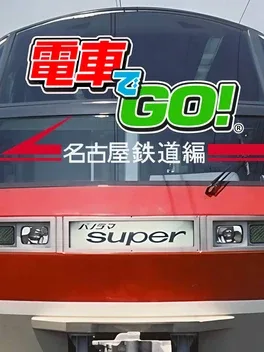
A release not seen in arcades, this Densha de Go! entry focuses on Meitetsu's railroad lines in Nagoya, including the series' only monorail. You play as a train engineer which serve the Meitetsu Nagoya line in Japan. There are many kinds of trains that you can drive, from express trains to monorails. Some trains are locked until you finish a mission, for example you can only drive monorails until you've finished the commuter and express train missions. All of the game parts, except the menu and station names, are in Japanese. In addition or the Meitetsu Nagoya Line, coverage includes Meitetsu Inuyama Line, Meitetsu Minomachi Line and Meitetsu Monkey Park Monorail Line. This was the first version to feature a monorail, and also featured a Meitetsu hybrid light rail route which ran both on regular train lines and as a sort of urban tram on special lanes in city streets. Part of the gameplay of this required the user to stop for regular traffic signals and avoid car traffic. This was the Densha de Go player's first opportunity to drive a vehicle much lighter (and thus shorter stopping distance) than standard trains. In this version, the driver must sound the horn before beginning to accelerate out of a station. This is unique to this title. The gameplay, physics, and strictness of this version were all somewhat relaxed compared to previous versions. The game was published by Taito for the Sony PlayStation in Japan on January 27, 2000. It was later ported to the PC by Unbalance on December 1, 2000. The PS1 version later received a re-release as part of D3Publisher's Simple 1500 series of budget games, as Simple 1500 Series Vol. 102: The Densha Untenshi - Densha de Go! Nagoya Tetsudou-hen, on August 29, 2002.
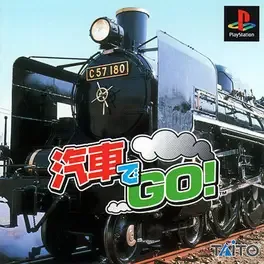
Kisha de Go! is an offshoot of the Densha de Go! series. This version of the game allows players to drive a steam train, rather than an electric train like the other entries. The coverage included portions of the Keihin-Tōhoku Line, Shin'etsu Main Line and Ban'etsu-Sai Line. The controls were made slightly more complex to reflect steam operation.
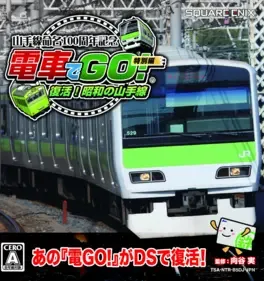
Densha de Go! Tokubetsu-hen: Fukkatsu! Shouwa no Yamanotesen (loosely translated to "Go by Train! Special Edition: Revival! Yamanote Line of the Showa Period") is an electric train driving simulation game developed by Ongakukan and published by Square Enix for the Nintendo DS in Japan on July 22, 2010. A handheld spin-off of the Densha de Go! series (and the only one not developed by Taito, instead developed by the studio behind Train Simulator), Tokubetsu-hen utilizes the platform's dual-screen display to simulate the driver controls using the touchscreen. Celebrating the 100th anniversary of the electrified Yamanote Line in Tokyo, this entry focuses solely on that route with trains both modern (E231-500, 205, and 103) and historical (101, 72, 31, 30, and DeHa 6285). With historical trains, the route appears as it was during the 1950s. The game also includes a quiz about the Yamanote Line as a mini-game.
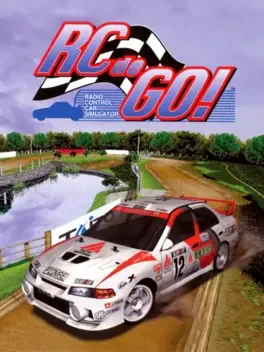
RC de Go! is an arcade racing video game developed by Taito Corporation, first released to Japanese arcades in 1999 for Taito's G-NET system. It was later released for the PlayStation, with publishing in North America and PAL territories handled by Acclaim Entertainment.

The player can choose from a variety of tracks and trains and will then have to drive the train to the designated stations while sticking to the tight schedule, stopping exactly at the marked positions, obeying all signs and signals, and ensuring passenger safety and comfort. Whenever the player makes a mistake, points are deducted from a counter which at the start of each round is initialized to a value depending on the selected difficulty. If it reaches zero, the game is over. This title features, among others, the Yamanote Line around Tokyo, and parts of the To-kaido- Main Line.
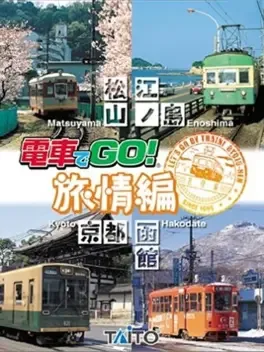
Taito's 13th entry in its train simulation series, this one focused on electric trams and light rails. Ganbare Unten-shi!! (loosely translated to "Good Luck, Driver!!") is an electric train driving simulation game developed and released by Taito for arcades in Japan on October 2000. A spin-off of the Densha de Go! series (and using the same engine as Densha de Go! 3 Tsuukin-hen), Ganbare Unten-shi!! focuses on light rail transit with two routes: the Enoshima Electric Railway and the Iyo Railway. While much of the game is the same as the main series, it modifies the braking and throttling controls for added precision and adds controls for operating the vehicle's doors. Due to street traffic, maintaining a timetable is not as strict as previous entries and the time-based penalty system is replaced with a "lives"-based one. The game was later ported to both the PlayStation 2 (on July 25, 2002) and PC (by Unbalance on June 5, 2003) as Densha de Go! Ryojou-hen (loosely translated to "Go by Train! Emotional Travel Edition"). This version features features an updated graphics engine (based on Densha de Go! Shinkansen) and adds four additional routes: two from the Keifuku Electric Railroad and two from the Hakodate Transportation Bureau.